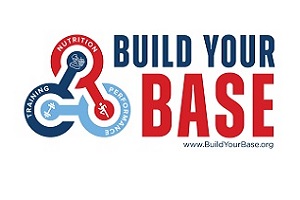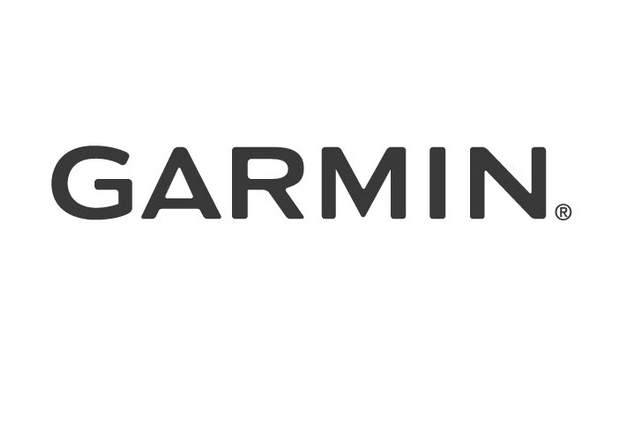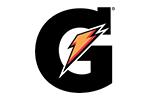Core Principles
By Claudia Terlizzi Chapel
Muscular Therapy Center
asksparky@iamachampion.net
The core is more than the physical center of the body. It is a complex system of musculature of the trunk that includes the diaphragm, abdominals, the pelvic floor, the muscles of the back and the hips. The power and suppleness of the core is at the center of athleticism. An athlete with a strong core displays agility, proprioceptive awareness, endurance and flexibility. Core strength is involved in practically every sport but is often under-trained. This is most likely due to core-strength training at the wrong phase of the training program.
The best time to train the core is off-season and pre-season, preparing the body's overall strength and fitness. Core exercises are great for warming up and cooling down the body's temperature. Core work can be incorporated within the general work out although it is important to remember not to fatigue the musculature of the midsection if an intense work out is to follow.
Preventing injury to these muscles is somewhat involved as it requires not only strengthening but also good breathing technique, body mechanics, hydration, excellent nutrition and rest. Understanding the requirements and following through with training, demands discipline, personal responsibility, and accountability. These are the themes we invoke in all of our therapy sessions, with athletes of all ages.
A STRONG AND FLEXIBLE CORE
A strong and flexible core is essential to performance. The muscles of the core or trunk are the braces of the spine. They are the communicators between the brain and the central nervous system. Strengthening of the core allows for a more sophisticated communication system.
Poor core strength results in wasted energy, poor biomechanics and unnecessary sway during movement. The synergy of movement is created when a strong and stable core allows for efficient movement. If the core is not strong or properly trained, the reliance on synergistic muscles to compensate for weak and inflexible core muscles will lead to poor performance of the gluteals, pain, injury and overuse syndromes.
CORE STRENGTH TEST: THE PLANK
- Resting on forearms with legs straight back and torso lifted
- Hold position for 60 seconds
- Lift Right arm off ground for 15 sec. Return
- Lift Left arm off ground for 15 sec. Return
- Lift Right leg off ground for 15 sec. Return
- Lift Left leg off ground for 15 sec. Return
- Lift Right arm and Left leg for 15 sec. Return
- Lift Left arm and Right leg for15 sec. Return
- Return to Plank position and Hold for 30 seconds.
If you cannot complete exercise efficiently, do it 3-4 times per week until it can be completed.
If you CAN complete exercise without wavering, core strength is GOOD.
STRUCTURE
Bones provide the structure and the foundation for the attachment of the musculature. The muscles of the low back link the spine to the hip and they extend and laterally flex the spine. The gluteals are responsible for abducting, extending, flexing and rotating the femur on the hip joint. The Quad femoris, the piriformis and the sartorius link the femur to the core. They adduct, flex and externally rotate the femur.
As previously stated, it is the synergy of the movements created through a stabilized core that allow for the flow of movement.
WHAT WE DO
As sports medicine professionals we attempt to locate imbalance in the structure and musculature and correct, educate and facilitate optimal performance. This is what we do; how we do it varies greatly! We are always on the look out for a weak core as an indicator of other issues.
TRIGGER POINTS
Trigger points are fibrous nodules within taut bands of tissue that are painful and give rise to a predictable pattern of pain when compressed. Pressure to them triggers a pattern of referred pain. These trigger points are not limited to muscle tissue and can occur in cutaneous, ligamentous, fascial and periosteal tissue. What was once thought of as psychosomatic or vaguely named as lumbago or fibrositis is today often called myofascial pain syndrome.
Trigger point therapy has shifted the focus from just locating the tight band and nodule to treating the condition with increased depth and pressure on the specific point.
When active, trigger points are a common source of an athlete's complaint of regional pain. The pain often refers out and is commonly felt as muscle tension without specificity. Muscles with trigger points are less elastic, resistant to stretching and have decreased range of motion.
When compressed, an active point often creates a local twitch response, a visible contraction in the fibers. The irritability of trigger points increase in direct relation to overload, repetitive use and/or overuse of muscles.
Left untreated, trigger points spread tension and pain throughout the myofascial chain, leading to measurable motor dysfunction.
THE FASCIAL NETWORK
The fascial system is a multidimensional network starting just below the skin and extending deep within our bones and internal organs. It is a multifaceted and continuous connective tissue web. It is the unifying medium for all components of the body's locomotor system. It is rich in sensory neurons and not only generates but reflects the proprioceptive and pain responses.
Tensegrity is an architectural term coined by Buckminster Fuller that describes the structural integrity maintained through continually adjusting the tension and compression of said structure. An example of this is a suspension bridge. The opposite structural form is one of continuous compression such as a brick wall. The difference between these structures aptly describes what a well working fascial network would look like. A suspension bridge while not as firm as a brick wall is far more resilient. In the tensegrity model the tension is reflected throughout the system. When the stretchy elastic system that is the fascial network is disrupted, the restrictions can create strain in other more distant structures. Hence, in an effort to create stability because the core may be weak from overuse or imbalance, the network may lay down extra collagen creating more inflexibility ultimately leading to injury.
BREATHING, YOGA, PILATES, MARTIAL ARTS
Yoga, Pilates, and Martial Arts have been found to work wonders for young people attempting to strengthen the core and increase flexibility. Implementing some of the basics of these modalities either in gym class or in the warm up routine would greatly improve conditioning pre-season and could be carried out SAFELY throughout the competitive phase of training. The focus of these modalities is on timing and proper breathing technique, which promotes more efficient oxygen intake. The ultimate result is less injury and healthier individuals on and off the track not to mention it's fun and relaxing. Relaxation and focus are key elements of a champion's mentality.
BREATHING, BALANCE AND CORE STRENGTH
As one might expect breathing deeply when faced with a perceived or real threat helps to bring one's awareness to the situation at hand and gives one time to make the decision to act. For many the fight or flight response is so deeply embedded from early childhood that the raising of a coach's voice or a call to step up to the line invokes a near panic response, elevating the heart rate, shutting down, shutting out etc. Training one's breathing to accommodate for this fight or flight response diminishes the fear factor and increases the oxygen intake while allowing one to hear what is being said with less emotion.
Adding diaphragmatic breathing exercises to the regimen of core exercises can help bring balance to the athlete mentally and physically. Focusing on full and expansive breaths while putting one's intention directly towards the core can calm an athlete down between events, can help the athlete find his/her center and help the athlete to actually feel where the center is. This strategy is useful when pulling a team together in preparation for competition. After a few deeply realized breaths, experiment with lifting one leg then the other, with eyes open, with eyes closed, keeping arms in front of the body, posed or moving them in an arc and bringing them forward and center.
NUTRITION
Fruit Bowl Method: Place a fruit bowl by the front door and fill it for Monday. Every time you walk out of the house, take a piece of fruit with you.
Hard Boiled Eggs: Boil up a dozen eggs for Monday. Every day, take two with you
Celery and Carrots: Wash and chop a bag full of each for Monday, take a baggie full (throw in the eggs).
Sparky's Trail Mix:
- Bag of Newman's Own Pretzels (Spelt or Protein)
- Almonds and Sunflower seeds
- Organic dried cranberries or apricots (these you have to chop up)
- Mix them together in a big plastic bag for Monday and use all week.
Fruit Smoothie:
- 1 cup FROZEN fruit (berries or cherries taste the best)
- 1 heaping scoop of protein powder
- 1 tablespoon of flax seed oil
- 1 teaspoon of almond butter
- 1/2 c almond milk
Put this mixture in the blender until thoroughly mixed. It will taste like a frozen milkshake; you will thank me for the BEST protein brekkie ever!
You can substitute WHOLE milk or whole yoghurt
HOW YOU DO ANYTHING IS HOW YOU DO EVERYTHING
NO individual has sufficient experience, education, native ability, and knowledge to insure the accumulation of a great fortune without the cooperation of other people.





